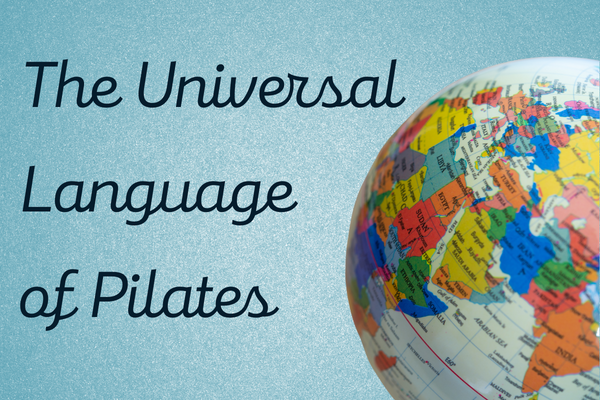
Learning to teach Pilates in a second language
Although I have lived in an English environment for over 20 years, French is my first language. I can’t recall the number of times I get asked if I dream in French or English. My answer to this question is always: “I have no idea. I just dream”. However, this is not the case with Pilates.
When it comes to Pilates, I think in English. It is a clear switch that happens in my brain. Somehow this distinction is unquestionable to me. I often wondered why. I eventually concluded that it is because my learning journey of the method was solely done in my second language, English. French was not part of this process; I find teaching in French so challenging.
Instinctive Efficiency
Have you ever noticed that adults tend to count in their native tongue? Prior to becoming a Pilates Teacher, I worked in hotels. In the late 1990s, I was part of the Front Office team at a hotel in Toronto, Canada. It was a very international group, my colleagues were Italian, Chinese, Colombian, Filipino, etc., and I was the “Frenchie” from Quebec.
At the end of our shift, we all sat in the back office to count our floats and suddenly, we’d all revert to our first language to count. The back office was like a mini version of the United Nations. Three to four different languages could be heard aloud all at once. I used to love it. It was liberating and unique. I remember thinking that although we could all count in English, instinctively, our brain switched to the most efficient way to calculate.
Mastering the Skills in a Second Language
A similar process happened to me with Pilates, except English became my native tongue this time. It is the language in which I mastered the skills, the knowledge of the method and taught for over ten years. I compartmentalised it all in my “English brain box”.
It was not an easy process at the time; it challenged me. All my previous academic knowledge was acquired in French or from a French perspective, including learning a second language. So, when I embarked on my Pilates teacher journey, everything was in English, the name of the exercises, the counting, the cueing, etc.
It raised insecurities in me. Many were the same as my peers; there is so much to learn even at the basic level, but some were more on a linguistic level. I worried about my pronunciation, understanding of nuances, and creating cues or imagery that would make sense and flow out of my mouth in time.
I was learning the classical method, and a big part of my certification was to teach within a certain rhythm and learn to cue and correct without messing it up. I wanted to learn the beautiful imagery so perfectly enunciated by my teachers and peers, and I used them too, but it did not come out fluently for me and it disturbed the flow. And the counting! I kept switching from English to French. I think it confused me more than anyone else. I doubted my abilities to communicate and teach.
Fortunately, I was lucky to be in a very understanding and supportive environment. My teachers and my group encouraged me. They kept saying it was part of my charm. I certified and began my teaching journey. My clients enjoyed teasing me with how I pronounced some words but always in good faith. They often ask me to count in French for fun. It has created some funny anecdotes, which I will share later as part of this series.
For now, we would like to hear from you…. Have you learned Pilates in a second language? What was your experience?
Eve Fairbairn, PAA Committee Member

Comments are closed.